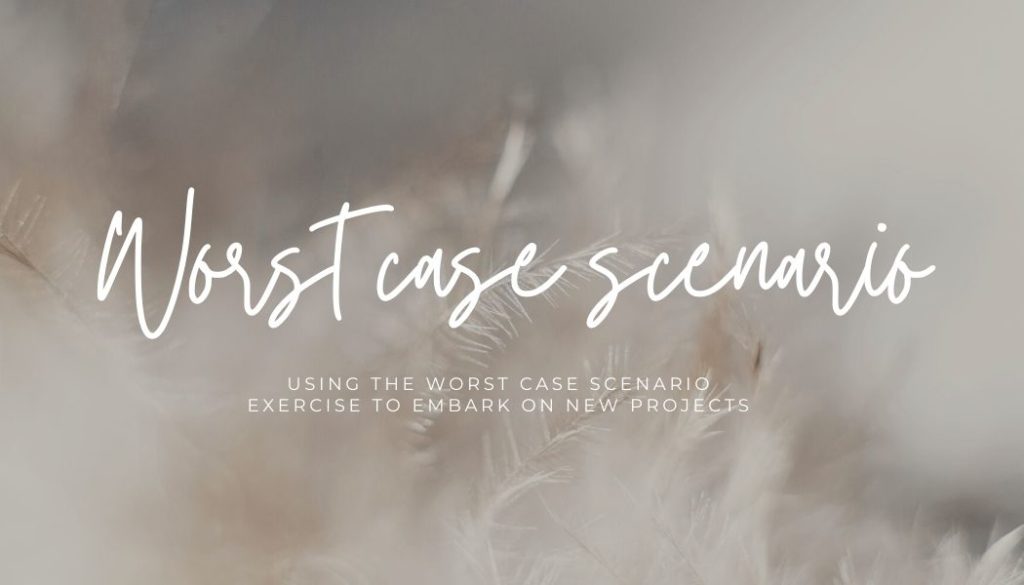Oftentimes, people attribute a negative connotation to “worst case scenario” thought patterns.
There are ways of getting around this thinking and actually using it to our own advantage. At times, sitting down and doing a bit of writing around situations which upset or bring discomfort to us, by using the “worst case scenario” exercise, can help find solutions to difficult problems. It is a great exercise to implement before embarking into a new project.
Find clarity in the negativity
You’d think that this can be extreme and “negative”, that our society prefers to look at the positive aspects. But let me tell you, the more we are open to enquiring these aspects, the more we are allowing ourselves to relax in the present moment. Because nothing looks as bad as it seems, using a “worst case scenario” exercise will break some myths for you and will invite you to see a situation from a different prospective.
Following is the exercise I use to burst some myths out of my own mind and help me follow through with projects. Use it as a guide to create your own “worst case scenario” for every new project and apply it in your life as often as you need.
Naming the fear or situation is the frist step
The first thing is to name the fear or the situation you fear might happen.
- I fear that xxx might happen in my life or in this new project.
Follow the statement with a little enquiry.
- What is the worst that can happen if this fear or situation manifests in my life?
Jot down a couple of issues or problems you might be facing in the project.
Once you have it down on paper, look at the worst case scenario and question yourself:
- Which solutions could I implement to solve those problems?
Use your imagination and play around with the idea. Tap into your problem solving skills. Take a look at the possibilities and find solutions. Anticipating problems is the best thing you can do for yourself when embarking into a new project or when you practice fulfilling your own vision.
Solutions to your worst case scenario
Get down to three to four actions that you will put into practice if the worse will happen.
Now, look back at your worst case scenario and ask yourself:
- On a scale from one to ten, how likely is it for this situation to happen?
You found your solutions and you also realised that maybe it is not that likely that the situation will happen in any case. And you also found the solution to the problems you might be facing. From there you can go to the least “worst case scenario” and figure out what realistically would happen. You now have a resource of solutions which you can put into practice to face the potential difficulties. Once the fear is faced there is nothing that can hold you back. Learn to apply this methodology in your decision making process and accept that you are fully equipped to deal with any type of situation.
Gaining confidence and embracing the unknown will be easier with this exercise. Find clarity in your situation and take the leap of faith. Nothing beats a worst case scenario than action.
What are you fearing the most? Are you ready to face that? Are you willing to open up to the infinite possibilities?
If the negative thinking persists, please consult a professional. Read this article to find more about what to do when the catastrophic thinking persists.
